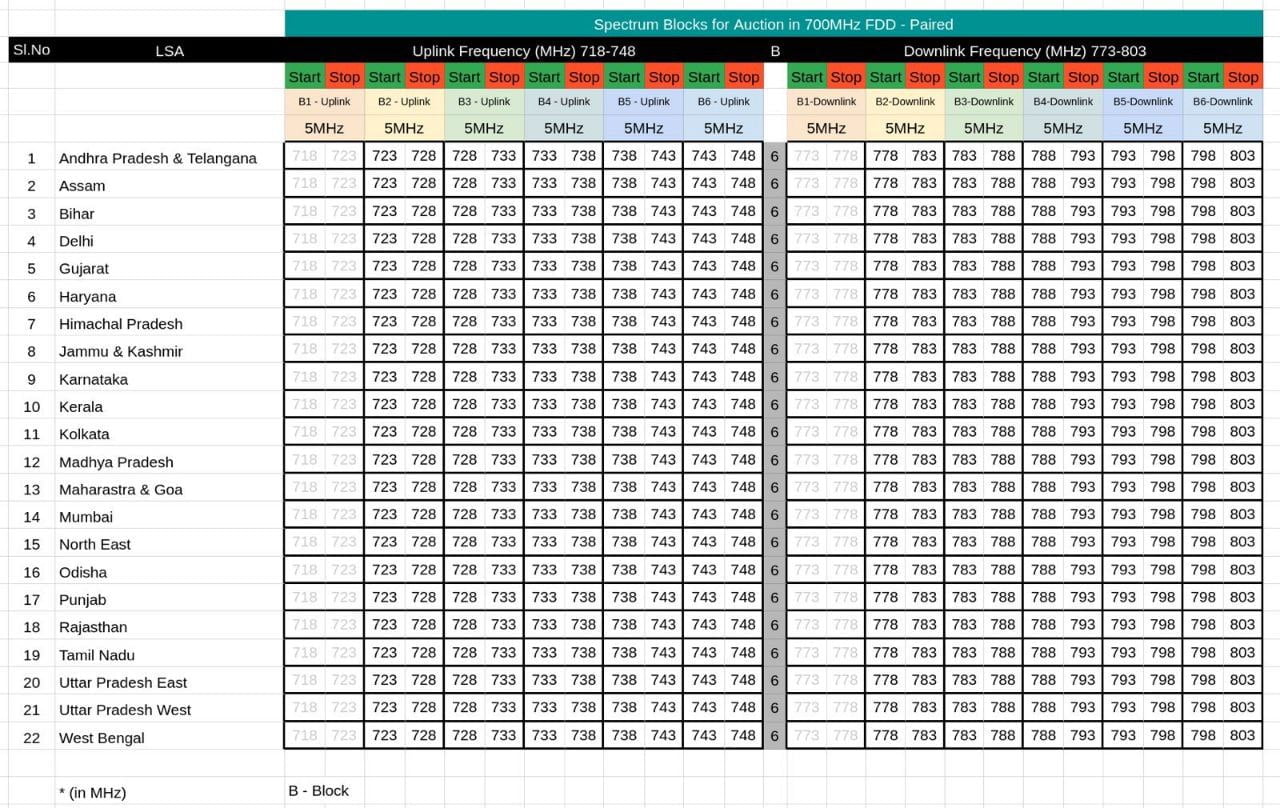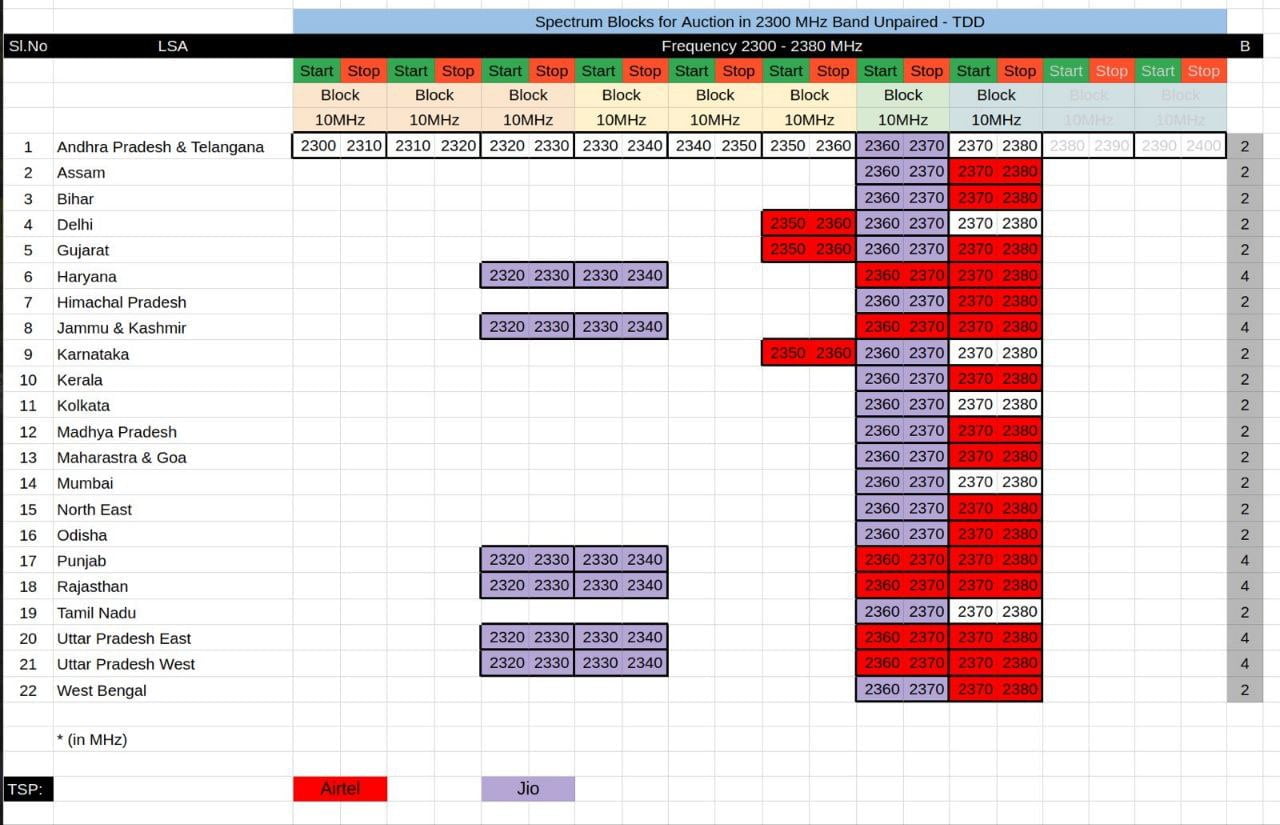Spectrum Auction 2022, an auction that enables India to launch 5G, is hardly a few days away. While consumer usage of 5G is a different story that we may discuss later, the entire focus now is on the spectrum auction. For those not from a technical background and who wish to understand the basics of the spectrum in the context, this story can be of some help as we tried to explain the same in layman’s terms.
What is Spectrum?
Spectrum refers to the invisible radio frequencies that wireless signals travel over. These signals enable us to make calls, send SMS, browse web pages, listen to music, watch videos, and do everything with connectivity on our mobile devices. The unit for frequency is the hertz (Hz), 1 MHz = 10,00,000 Hz. Differing wavelengths and frequencies mean that the signals have different properties and can be used in different ways. For example, some travel a shorter distance but carry more data, and some travel a farther distance but don’t have much capacity. The spectrum is divided into a number of frequency bands, each possessing characteristics peculiar to it which determine the usage appropriate to that band. The numbering and naming conventions set by International Standard Organizations help us to easily identify and refer to different types of frequencies.
Spectrum to be Auctioned in India
Rights to use spectrum at specified frequencies in the 600 MHz, 700 MHz, 800 MHz, 900 MHz, 1800 MHz, 2100 MHz, 2300 MHz, 2500 MHz, 3300 MHz and 26 GHz bands for a period of twenty years are being offered in this Auction. The spectrum which is auctioned is sold as ‘Paired’ – FDD (Frequency Division Duplexing) and ‘Unpaired’ (Time Division Duplexing) – TDD. You can refer to the list of bands used for telecom services in India in the ‘Frequency Bands’ tab of the Spectrum sheet. FDD Bands: 600 MHz, 700 MHz, 800 MHz, 900 MHz, 1800 MHz, 2100 MHz TDD Bands: 2300 MHz 2500 MHz, 3300 MHz and 26 GHz bands
The Lane Visualisation
Simply put, you can imagine ‘paired’ as a two-way lane, where in one lane uplink happens and downlink in the other, and ‘unpaired’ as a single lane where both uplink and downlink happen using the same lane. Assume the block of spectrum put to auction to the width of the lane for capacity.
Block Size
Spectrum is auctioned in blocks, whose sizes are as below. The minimum bidding quantity varies with new and existing entrants and spectrum availability. A minimum of 5 MHz Block is required to offer 4G services in the bands wherever feasible. India has also experienced 4G on a 3 MHz Lean LTE carrier with peak downlink speeds of around 12 Mbps on 1800 MHz Band. Block Size for Bands: 0.2 MHz: 900 MHz, 1800 MHz 1.25 MHz: 800 MHz 5 MHz: 600 MHz, 700 MHz, 2100 MHz 10 MHz: 2300 MHz, 2500 MHz, 3300 MHz 50 MHz: 26 GHz
Block Multiples
5 Blocks of 0.2 MHz = 1 MHz 25 Blocks of 0.2 MHz = 5 MHz 4 Blocks of 1.25 MHz = 5 MHz The spectrum being auctioned is liberalised in nature, and there are no restrictions on the technology (GSM/WCDMA/LTE/CDMA/IMT-2020 (5G technology) to be deployed for providing services. In short, telcos can offer CDMA/2G/3G/4G/5G using the spectrum purchased through the auction.
Understanding Paired Spectrum Block:
Let’s understand paired spectrum by taking the 700 MHz band as an example.
Band: 700 MHz (Uplink: 718-748 MHz) (Downlink: 773-803 MHz) Type: Paired Spectrum, FDD (Frequency Division Duplexing) Frequency put for Auction: 25 MHz Paired: Uplink channel + downlink channel For example, if a telco ‘A’ wins one block (second block to refer), i.e., 5 MHz of spectrum in the 700 MHz band, it will mean that the telco is assigned 723-728 MHz (5 MHz) in uplink frequency paired with 778-783 MHz (5 MHz) in downlink frequency. Thus, the telco would be able to use the 5 MHz for uplink and 5 MHz for downlink purposes, 10 MHz in total. Hence, it is called a paired spectrum due to this configuration where a block of spectrum in a lower frequency band and an associated block of spectrum in an upper-frequency band are used together. In the FDD band, the spectrum is divided into the uplink channel and downlink channel by dividing the frequency. In technical terms, Frequency Division Duplexing is a technique where the transmitter/uplink and receiver/downlink operate at different carrier frequencies. Understanding Unpaired Spectrum Block in India: Let’s understand the unpaired spectrum by taking the 2300 MHz band as an example.
Band: 2300 MHz (Frequency for commercial TSP: 2300-2380 MHz) Total Frequency: 80 MHz Type: Unpaired Spectrum, TDD (Time Division Duplexing) To understand this, let us say if telco ‘B’ wins one block of spectrum in the 2300 band (10 MHz) in the Andhra Pradesh circle. It would mean that the telco is assigned 2360-2370 MHz = 10 MHz unpaired spectrum. The telco can use this 10 MHz spectrum for both uplink and downlink purposes. Thus, a single frequency band is used for transmitting/uplink and receiving/downlink; a technique where the frequency is used by sharing and assigning alternate time slots for transmitting and receiving signals. Hence it is called unpaired spectrum and Time Division Duplexing (TDD).
FDD/TDD:
After observing the above band configurations with examples, the definitions of FDD/TDD are likely to be easier for you to understand. FDD is implemented on a paired spectrum where downlink and uplink transmissions are sent on separate frequencies. In FDD, the transmission of uplink and downlink happens simultaneously. TDD is implemented on an unpaired spectrum, implying the usage of only one frequency for both downlink and uplink transmissions. TDD is suitable for asymmetric transmission needs. Band - Then and Now Transition 800 MHz Band - CDMA/EVDO > LTE Services by Jio 900 MHz/1800 MHz Band - GSM/2G, 3G on 900 MHz by Airtel > refarmed for LTE Services 2100 MHz Band - 3G Services > 3G refarmed for LTE Services 2300 MHz/2500 MHz - LTE Services 600 MHz/700 MHz/3300 MHz/26 GHz - 5G Services (to be rolled out commercially)
Dynamic Spectrum Sharing (DSS):
Using Dynamic Spectrum Sharing, telcos can seamlessly operate 5G and 4G concurrently within the same spectrum block. DSS enables service providers to dynamically share spectrum across different technologies. Let’s say telco ‘A’ is offering 4G services using 20 MHz; the same spectrum can be dynamically used to offer 5G services. Although DSS is not related to Spectrum Auction, knowing this will help you understand the technology transition and spectrum utilisation. So, spectrum configuration gives us an idea about the frequency, band plan, block size and basically an address and specification to identify the characteristics of the spectrum block being auctioned from an imaginary spectrum pool. For detailed information on spectrum holdings, please refer to the excel sheet.


